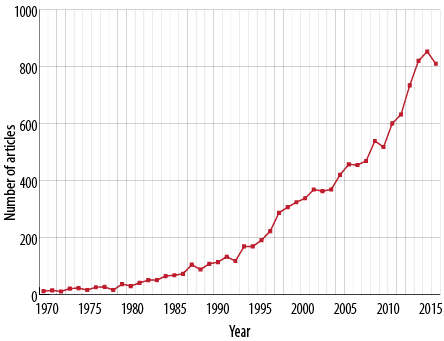The prevalence of chronic non-communicable diseases in Oman has been accompanied by recent rapid economic growth and changes in lifestyle choices.1 Diabetes is a growing public health challenge in Oman.1,2 Its prevalence has continued to increase over the past two decades.2 Due to this alarming trend, diabetes is currently considered a priority health problem by the Ministry of Health (MoH).2 Unless this upward trend is curbed, the prevalence of diabetes-related complications, including diabetic foot disease (DFD), is expected to rise.
DFD is defined as a syndrome in which peripheral neuropathy and peripheral vascular disease may result in foot ulceration, infection, deformity, and/or lower limb amputation in patients with diabetes.3 It is one of the most debilitating and costly complications of diabetes, with a lifetime prevalence of up to 25%.3,4 Moreover, around 40–60% of all non-traumatic lower limb amputations are attributed to DFD.4 In Oman, amputation data from the MoH indicate that diabetes is responsible for about 47% of all lower limb amputations.5
Given the significance and magnitude of the problem, a number of regional diabetic foot care initiatives has been established. The Gulf Diabetic Foot Working Group (GDFWG) was founded in December 2012 by a group of multidisciplinary healthcare professionals involved in the prevention and management of DFD in the Gulf.6 It aims to improve the overall quality of diabetic foot care delivery in the region. Furthermore, the group holds an annual conference (the Gulf Diabetic Foot Conference, now in its third year) where knowledge and expertise is exchanged, and local and international diabetic foot research is presented.6 Another initiative was the launch of the Diabetic Foot Journal Middle East, a platform for disseminating locally conducted scholarly diabetic foot research.6
On a global scale, progress in diabetic foot care has been made through decades of research and international collaboration. The number of articles, published in peer-reviewed journals and indexed in MEDLINE®, on the epidemiology, pathogenesis, and management of DFD has increased over the past few decades [Figure 1]. By far, most of the volume of scholarly research on DFD comes from non-Arab countries.7

Figure 1: Increasing numbers of diabetic foot-related articles, as indexed by MEDLINE®, are appearing in the literature.
Despite the significant morbidity and mortality associated with DFD, interest and research activity in DFD is lacking in Oman.5 A PubMed search using the following clinical medical subjects’ headings, “Oman,” “diabetes mellitus,” and “diabetic foot,” alone and in combination, was conducted to estimate the volume of Omani scholarly diabetic foot research. The search identified 56 diabetes related articles published from Oman from January 1991 to December 2016. Of these, only two articles related to DFD.5,8
The low research output in the fields of diabetic foot care and DFD in Oman undoubtedly leaves unanswered questions concerning the epidemiology, prevention, and management of DFD. This paucity of diabetic foot research must be addressed urgently. Studies are needed to improve our understanding of the extent of DFD, and the impact of current diabetes programs on the quality of diabetic foot care in Oman.5 Ongoing support from health authorities through funding and provision of infrastructure for diabetic foot research is imperative. Collaboration with leading regional and international diabetic foot research organizations, such as the GDFWG and the International Working Group on the Diabetic Foot, is crucial to achieve this objective (i.e., through exchanging ideas, providing research supervision, and conducting collaborative multicenter studies).
Disclosure
The author declared no conflicts of interest.
references
- Al-Lawati JA, Mabry R, Mohammed AJ. Addressing the threat of chronic diseases in Oman. Prev Chronic Dis 2008 Jul;5(3):A99.
- 2. Al-Lawati JA, Panduranga P, Al-Shaikh HA, Morsi M, Mohsin N, Khandekar RB, et al. Epidemiology of Diabetes Mellitus in Oman: Results from two decades of research. Sultan Qaboos Univ Med J 2015 May;15(2):e226-e233.
- 3. International Working Group on the Diabetic Foot. International Consensus on the Diabetic Foot. The Netherlands: International Working Group on the Diabetic Foot; 1999. p. 20-96.
- 4. Boulton AJ. The diabetic foot: grand overview, epidemiology and pathogenesis. Diabetes Metab Res Rev 2008 May-Jun;24(Suppl 1):S3-S6.
- 5. Al-Busaidi IS, Abdulhadi NN, Coppell KJ. Care of Patients with Diabetic Foot Disease in Oman. Sultan Qaboos Univ Med J 2016 Aug;16(3):e270-e276.
- 6. Aiming to improve diabetic foot care in the Gulf region — the Gulf Diabetic Foot Working Group (GDFWG). The Diabetic Foot Journal Middle East. 2015;1(1):5.
- 7. Alzahrani OH, Badahdah YS, Bamakrid MS, Alfayez AS, Alsaeedi MS, Mansouri AM, et al. The Diabetic Foot Research in Arabs’ Countries. Open J Endocr Metab Dis 2013 Jul;3(3):157-165.
- 8. D’Souza MS, Ruppert SD, Parahoo K, Karkada SN, Amirtharaj A, Jacob D, et al. Foot care behaviors among adults with type 2 diabetes. Prim Care Diabetes 2016 Dec;10(6):442-451.